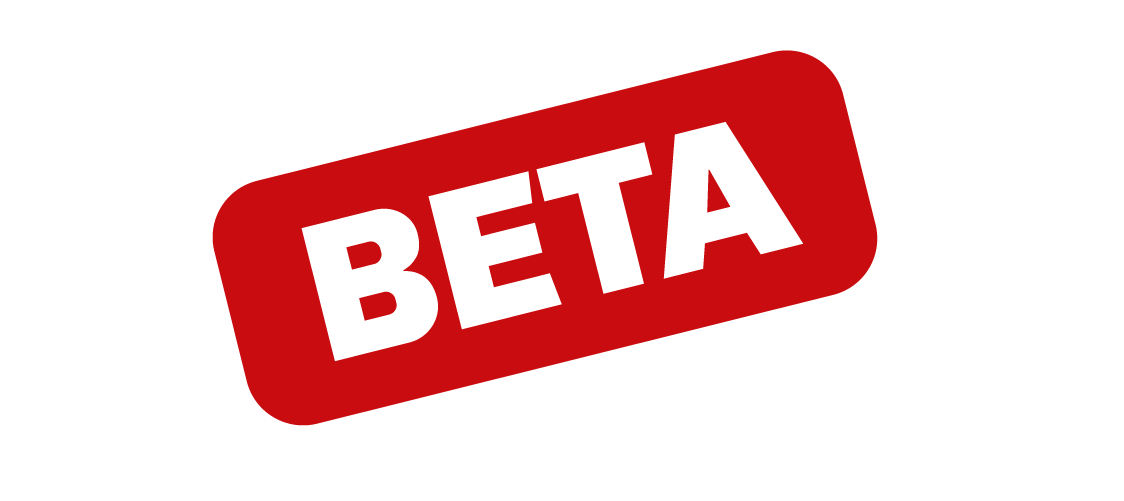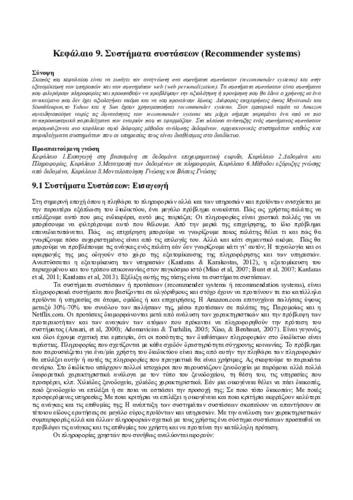| Title Details: | |
|
Recommender systems |
|
| Authors: |
Stalidis, Georgios Kardaras, Dimitrios |
| Reviewer: |
Diamantaras, Konstantinos |
| Subject: | MATHEMATICS AND COMPUTER SCIENCE > COMPUTER SCIENCE > INFORMATION MANAGEMENT MATHEMATICS AND COMPUTER SCIENCE > COMPUTER SCIENCE > INFORMATION MANAGEMENT > DATA MINING MATHEMATICS AND COMPUTER SCIENCE > COMPUTER SCIENCE > INTELLIGENT SYSTEMS > BASIC KNOWLEDGE REPRESENTATION AND REASONING |
| Keywords: |
Knowledge Extraction
Business Intelligence Marketing Information Systems |
| Description: | |
| Abstract: |
This chapter discusses the technology and applications of recommender systems. It presents the fundamental architectures and data analysis techniques that are currently used. The techniques include the content-based, the collaborative filtering, the knowledge-based and the hybrid ones. The chapter continues with the description of the major problems that restrict recommender systems success. The problems list includes the sparse data problem. There is often the case where ratings are sparse and not available for many service and product features, also not all users declare disclose their needs. The data Sparsity refers to the case where not enough product ratings or user behavioral data is available, thus making recommendations difficult or less useful. Next, the chapter discusses the cold-start problem, which implies that in the early stages of using a recommender system, the system lacks important information of user ratings, so it is difficult if not possible to suggest a user services without knowing almost anything about the users’ needs and priorities. The third major problem discussed is that of fraud. There are cases where users are trying to manipulate the recommender systems in favor of certain services, called push attacks, or in order to downgrade other, called nuke attacks. Finally, this chapter discusses recommender systems evaluation methods, as well as application areas and real life examples.
|
| Table of Contents: |
1. Recommender systems: introduction
2. Analysis techniques and strategies 2.1. Content-based techniques 2.2. Collaborative filtering techniques 2.3. Knowledge-based techniques 2.4. Hybrid techniques 3. Problems in the development of recommender systems 4. Advantages and disadvantages of techniques 4.1. Technique-method: content-based 4.2. Technique-method: collaborative filtering 4.3. Technique-method: knowledge-based 5. Evaluation of recommender systems 6. Applications and examples 7. Conclusions |
| Type: |
Chapter |
| Creation Date: | 2015 |
| Item Details: | |
| License: |
http://creativecommons.org/licenses/by-nc-nd/3.0/gr |
| Handle | http://hdl.handle.net/11419/1170 |
| Bibliographic Reference: | Stalidis, G., & Kardaras, D. (2015). Recommender systems [Chapter]. In Stalidis, G., & Kardaras, D. 2015. Data Management and Business Intelligence [Undergraduate textbook]. Kallipos, Open Academic Editions. https://hdl.handle.net/11419/1170 |
| Language: |
Greek |
| Is Part of: |
Data Management and Business Intelligence |
| Number of pages |
25 |
| Publication Origin: |
Kallipos, Open Academic Editions |


